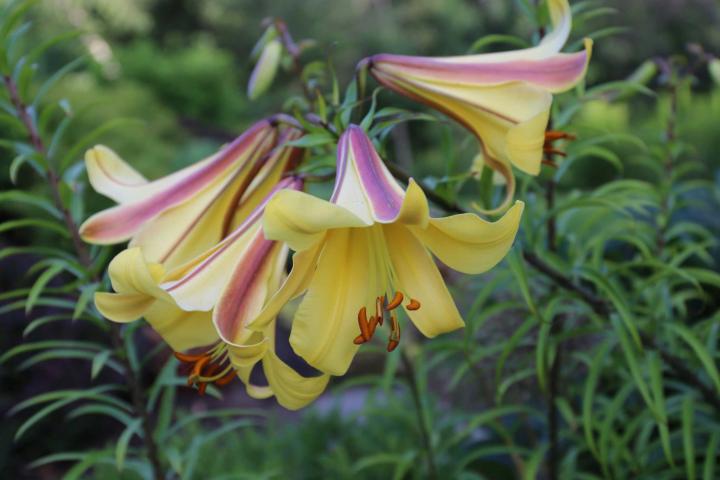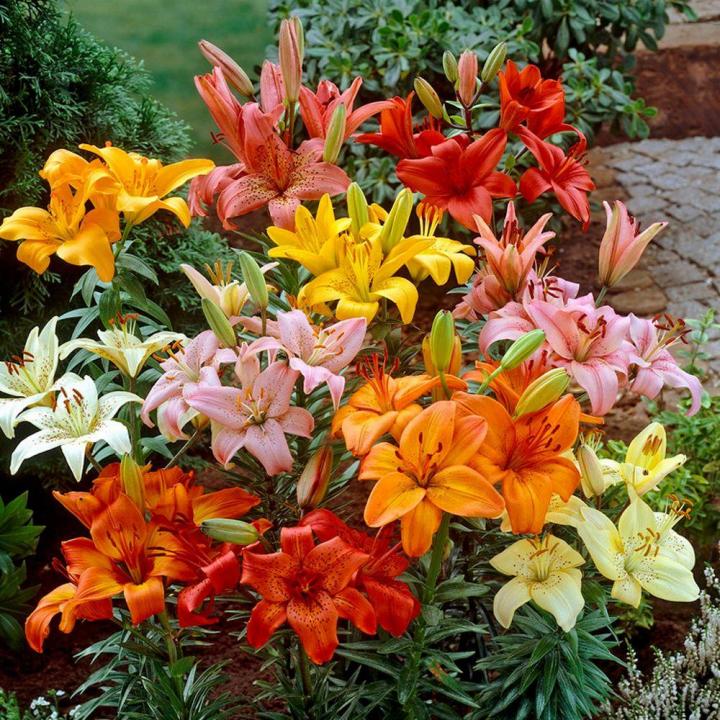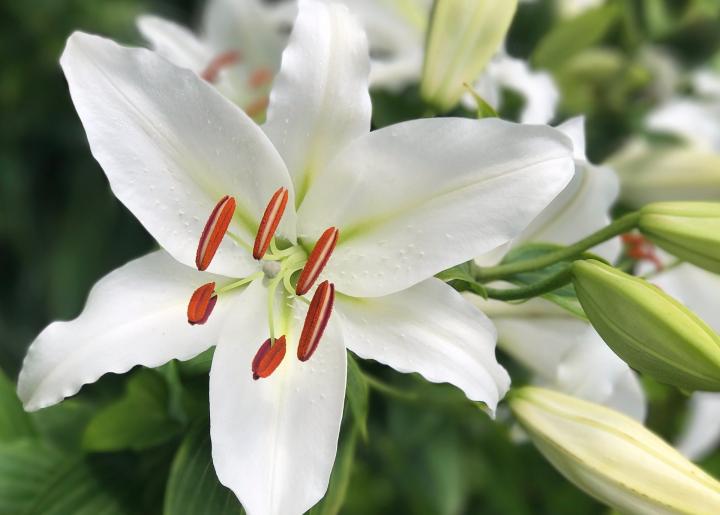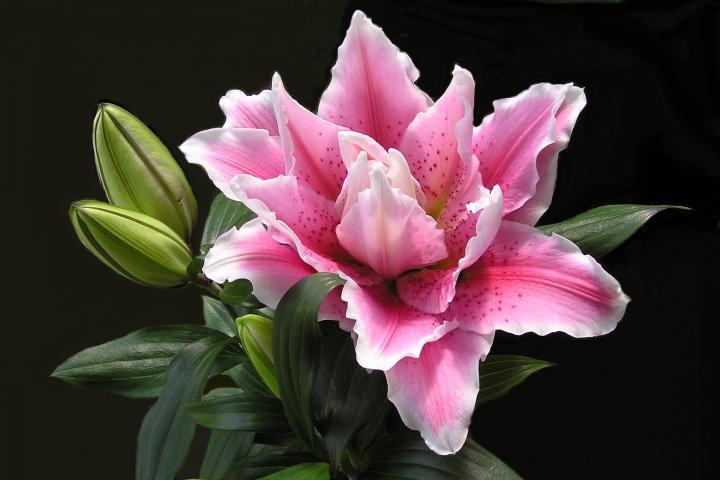
Planting, Growing, and Caring for Lilies
Types
There are many types of lilies that bloom at different times. With careful planning, you can enjoy lilies all summer long by planting bulbs from different varieties.
Asiatic lilies are the earliest to bloom and the easiest to grow. With their upward-facing flowers, they bloom early to midsummer. Hardy in Zones 4 to 9, Asiatic lilies come in pure white, pink, vivid yellow, orange, and red. Intense breeding has erased much of the Asiatics’ fragrance, but despite their lack of perfume, they are a favorite with floral arrangers.
- ‘Patricia’s Pride’: white flowers brushed with deep purple; about 32 inches tall; blooms in early to midsummer
- ‘Gran Paradiso’: large (4- to 5-inch) red flowers; 3 to 4 feet tall; hardy in Zones 3 to 8; blooms in early to midsummer
Trumpet lilies bloom mid-summer. Tall with trumpet-shaped flowers, they are hardy in Zones 5 to 9. Trumpet lilies grow many blooms (12 to 15 per stalk!) and have a wonderfully heady, sweet fragrance.
- ‘Album’, aka regal lily: white flowers; up to 6 feet tall; blooms in midsummer
- ‘Yellow Planet’: extra-large, buttery yellow flowers; 4 feet tall; blooms in mid- to late summer

Oriental hybrids end the season, blooming in mid- to late summer, just when Asiatic lilies are beginning to fade. From tiny 2-footers to towering 8-foot-tall giants, Orientals are always a striking choice (the shorter ones are great for patio beds or container gardens). Adored for their intoxicating fragrance that intensifies after dark, Oriental lilies produce masses of huge white, pink, red, or bi-color blooms. They make wonderful cut flowers that will fill even the largest of rooms with their spicy scents.
- ‘Black Beauty’: dark red, 5-inch, funnel-shape flowers; 5 to 6 feet tall; blooms in mid- to late summer
- ‘Casa Blanca’: white flowers; 3 to 4 feet tall; blooms in mid- to late summer
- ‘Stargazer’: large, deep pink, white-edge flowers; 2 to 3 feet tall; blooms in mid- to late summer
Native lilies provide a range of options; here are a few:
- Turk’s cap lily: densely spotted orange flowers; 4 to 7 feet tall; blooms in midsummer
- Canada lily: yellow to orange-red flowers; 3 to 8 feet tall; blooms in late spring to midsummer
- Wood lily: North America’s most wide-ranging lily; orange, pink-to-red flowers; 1 to 3 feet tall; blooms in July and August
ADVERTISEMENT
Hi
I have little growths all along the old stalks of my lilies. What are they?My lillies last year grew to 2mtrs high!
Should I cut the stalks ?
Thank you
Christine
Daylilies may develop seed pods on their stems after blooming. They are called “bulbils.” You can actually save these seeds! They’ll eventually turn brown or black. In nature, these bulbils drop to the ground and eventually grow into a flowering bulb. If left alone, the seedpods will just go to waste.
Gardner cuddle off my lily stem when it started to grow it was About Four or 5 inches the question is is it going to die the plant
Hi, the leaves on our white lilies are yellow and the buds are really small this year. Can you tell me what the problem is?
Yellow leaves can be caused by various factors, such as over or underwatering, lack of nutrients, too much or too little light, or low humidity. Check for diseases and pests such as aphids, which can cause distortion of flower buds and yellowing leaves.
Please keep in mind that lillies are poisonous to cats! I had to take our cats to the animal hospital for overnight IV solution to wash out the toxins, otherwise they could go into kidney failure. I thought daylillies would be ok, but there have been concerns that these are toxic as well.
Lisa-
This is so important to keep in mind, thank you for the reminder! Check out this article about Plants That Are Toxic to Cats, Dogs, and Other Pets.
I didn't find this question anywhere: I ordered lily bulbs and received them with sprouts. Should I go ahead and plant them even though the are trying to grow in the fall?
Got asian lilies as a gift. Blooms fell off 3 weeks ago. ? do I let it renew blooms w/o help or do I cut the old stems back or any advice. Thanx Joe B
Joe, I think this is what you are looking for; this and more appears on this page above:
- Lilies do not bloom more than once per season, but you can remove the faded flowers so that the plants don’t waste energy making seeds.
- After the lily blooms, you can also remove just the stem itself. However, do NOT remove leaves until they have died down and turned brown in fall. It’s very important not to cut back the leaves until the end of their season because hey help provide nourishment to the bulb for next season’s blooms.
- Cut down the dead stalks in the late fall or early spring.











